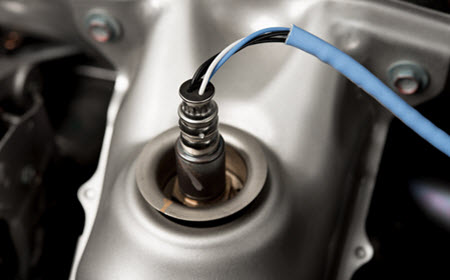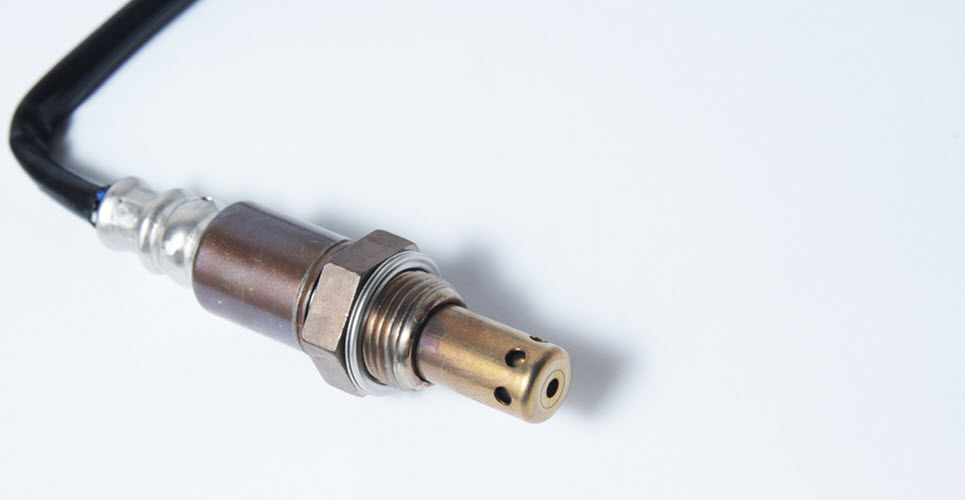While Porsches are known for their recognizable design, powerful engines, and cutting-edge technology, it’s important to keep an eye (and ear) on what goes on under the hood.
Oxygen sensors, which measure and regulate your car’s air-fuel mixture, keep your engine running at peak fuel efficiency. When your O2 sensor experiences problems, that efficiency can take a major hit.
The O2 Sensor in a Nutshell
The O2 sensor is located in the exhaust system and determines the ratio of oxygen and fuel that reaches the engine. In conjunction with the powertrain control module, it helps maintain the correct air-fuel mixture that goes into your engine. If the mixture is “rich,” it means the proportion of fuel to air is too high. When it’s “lean,” there’s a surplus of oxygen in the mixture. Either one of these extremes is going to cause your Porsche to run a lot worse and end up severely dampening your driving experience, as well as shortening the lifespan of your engine.
Oxygen sensors in cars newer than 1996 should be replaced after 100,000 miles. Any sensors in cars manufactured before that are recommended to be replaced after 60,000 miles.
How to Spot an O2 Sensor Problem
If and when your car starts experiencing performance issues, there are a number of warning signs, including sounds, sights, and even smells which will indicate whether it’s the O2 sensor or if it’s something else entirely:
- Heed the check engine light. This is a good starting point if you feel something is off with your car, since the first visible warning sign is very often when this light goes on. Though the check engine light can initially indicate any number of things, not just the oxygen sensor, it’s a helpful sign that something under the hood warrants more attention.
- Take note of your mileage. Very often a drop in mileage can mean that something’s wrong with your sensor. When the mixture is too rich and too much fuel is being injected into the engines, that means you’re going to be using much more fuel than usual.
Make a note of whether you’ve been filing your tank up more often lately, since that could be a sign that your engine is using more gas than necessary.
- Listen for a rough idle. A bad O2 sensor throws off engine timing and combustion intervals. When your car is idling, note whether it’s louder than normal, or whether the car seems to rumble or visibly shake.
- Check for a bad smell. When the oxygen sensor fails, often there can be a very unpleasant, sulphuric smell that comes out of your car’s exhaust pipe, like rotten eggs. In a short time it can creep into the car’s interior, as well.
- Check your emissions. A malfunctioning oxygen sensor can also lead to a combo of carbon monoxide, hydrocarbons, and black smoke coming out of your exhaust, a severe side effect that could lead to a large underperformance in any emissions test.
In addition, be on the lookout for engine performance issues like hard starts, random stalling, misfires, and much less responsive, even sluggish, acceleration.
As soon as you notice one or more of these warning signs, be sure to contact us so we can quickly pinpoint and repair the problem.
Hagan’s Motor Pool Will Find the Solution
If you have any of the above problems,  bring your Porsche to Hagan’s Motor Pool and our team of expert mechanics, specializing in German automotive repair, will determine what’s wrong with your car and the best way to service it to your satisfaction. We will use a scanner to check whether your O2 sensor is not working up to par, and whether it needs to be serviced or replaced.
bring your Porsche to Hagan’s Motor Pool and our team of expert mechanics, specializing in German automotive repair, will determine what’s wrong with your car and the best way to service it to your satisfaction. We will use a scanner to check whether your O2 sensor is not working up to par, and whether it needs to be serviced or replaced.
At Hagan’s Motor Pool, we take pride in our ability to diagnose and fix any problems with your German car. Customers throughout the areas of Alton, Barrington, Berwick, Dover, and Rochester, NH, can testify to our expertise. It would be our great privilege to have you come in and see for yourself how our professionalism and know-how can make your Porsche experience the safest and most exciting it can be. Call us today.

